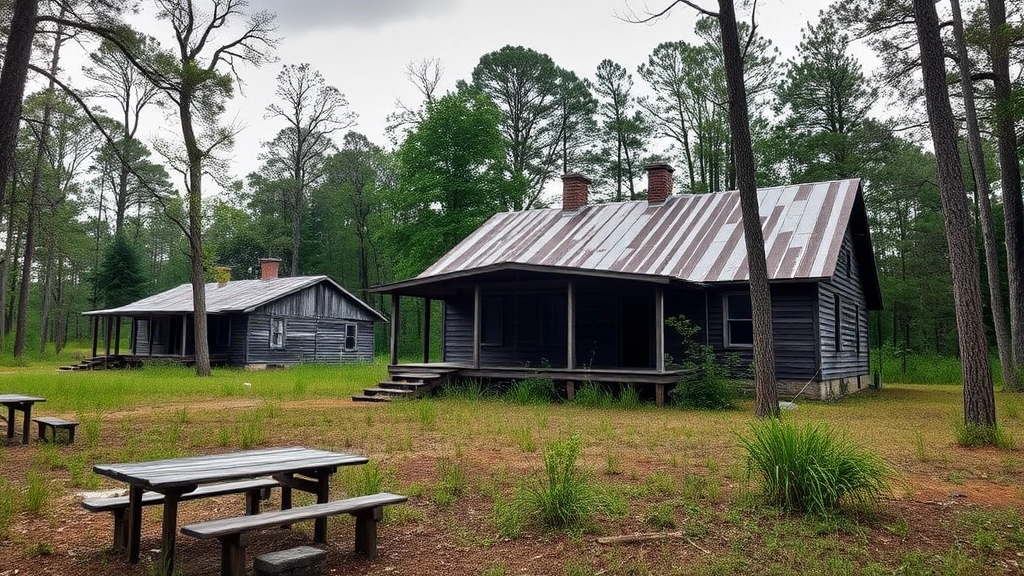Exploring Georgia’s Abandoned Summer Camps
Have you ever driven past an abandoned summer camp in Georgia and felt a chill run down your spine? Maybe it’s the eerie silence or the overgrown paths that spark your curiosity. In this article, we’ll explore the allure of these forgotten places, from their historical significance to the myths that surround them. Whether you’re an urban explorer, a history buff, or just someone looking for a unique adventure, this guide will offer you everything you need to know about Georgia’s abandoned summer camps.
We’ll start by listing some of the most popular abandoned summer camps in Georgia, delving into their historical backgrounds and why they were left to decay. We’ll also cover essential safety precautions for exploring these sites, tips for capturing their haunting beauty through photography and videography, and the role they play in popular culture. Additionally, we’ll discuss opportunities for restoration, legal considerations, and how to plan your own urban exploration adventure. So, gear up and get ready to uncover the secrets of Georgia’s abandoned summer camps!
Popular Abandoned Summer Camps in Georgia
Alright, let’s dive right into it. Ever wondered about the eerie charm of abandoned summer camps in Georgia? Maybe you’ve driven past one and felt a chill. Or perhaps, you’re just curious about what lies beyond those rusty gates. Either way, I’ve got you covered.
Why Are Abandoned Summer Camps So Fascinating?
First off, let’s get real. Abandoned summer camps are like time capsules. They capture a slice of history, frozen in time. Imagine stumbling upon old cabins, overgrown trails, and forgotten campfires. It’s like stepping into a world that’s been left behind. But why Georgia? Well, the state has a rich history of summer camps, many of which have been left to the elements.
Top Abandoned Summer Camps Worth Your Time
- Camp Crystal Lake
No, not the one from the horror movies. This Camp Crystal Lake is nestled in the heart of Georgia, and it’s got its own set of spooky vibes. Think dilapidated cabins and an overgrown lake. Perfect for an eerie adventure. - Camp Pinewood
Located in North Georgia, this camp was once a bustling summer getaway. Now, it’s a hauntingly beautiful site with crumbling structures and nature reclaiming its territory. - Camp Blue Ridge
Situated near the Blue Ridge Mountains, this camp offers stunning views and a peek into the past. The old dining hall and recreational facilities are still standing, albeit a bit worse for wear.
What Makes These Camps Popular?
- Historical Value: Many of these camps date back to the mid-20th century. They offer a glimpse into the past, showing how summer camps were once a staple of American childhood.
- Natural Beauty: Located in scenic areas, these camps are surrounded by breathtaking landscapes. Think lush forests, serene lakes, and mountain views.
- Adventure Factor: Let’s face it, exploring an abandoned site is thrilling. The unknown, the unexpected—it’s all part of the allure.
Personal Experience: My Visit to Camp Pinewood
I remember my first visit to Camp Pinewood. The air was thick with the scent of pine, and the silence was almost deafening. As I walked through the deserted cabins, I couldn’t help but imagine the laughter and chatter that once filled the air. It was a surreal experience, like stepping back in time.
What to Keep in Mind
Before you grab your backpack and head out, here are a few things to consider:
- Safety First: Always go in groups and make sure someone knows where you are.
- Respect the Site: These places are historical landmarks. Don’t vandalise or take anything.
- Legalities: Make sure you’re not trespassing. Some sites may be on private property.
The Historical Significance of Georgia’s Abandoned Camps
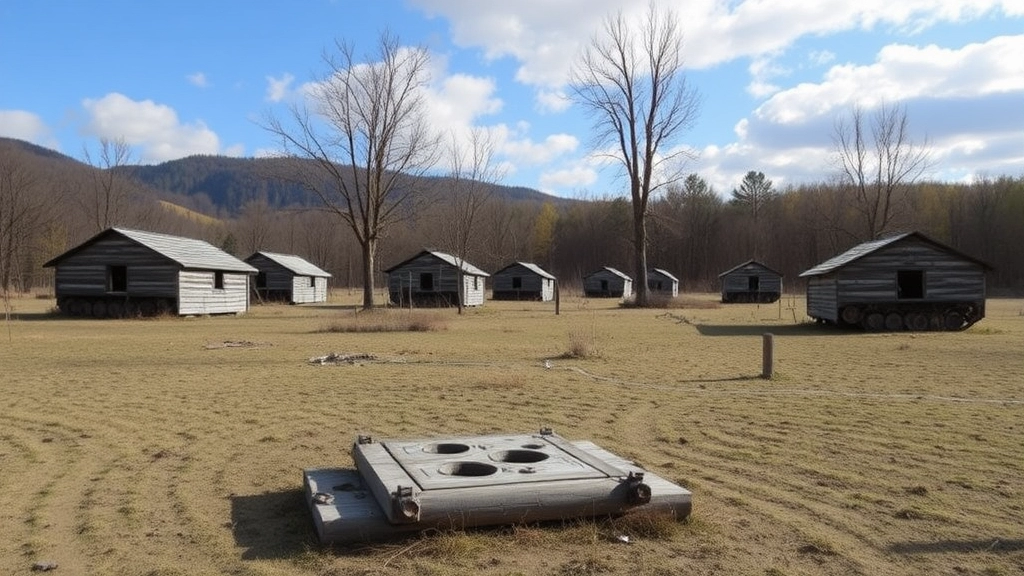
Ever wondered why so many summer camps in Georgia are just left to rot?
I did too.
So, I dug in.
And let me tell you, the history behind these abandoned camps is fascinating.
Why Were These Camps Abandoned?
- Economic Downturns: Many camps shut down due to financial struggles.
- Changing Interests: Kids today prefer tech over the outdoors.
- Natural Disasters: Floods and storms have rendered some camps unusable.
The Golden Era of Summer Camps
Back in the day, summer camps were the go-to for kids.
No screens, just fresh air and adventure.
Parents loved them because they offered a break from the daily grind.
But times changed.
Cultural Shifts
- Rise of Technology: Kids are more into video games and social media.
- Safety Concerns: Parents worry more about sending their kids away.
- Alternative Activities: Sports leagues, music lessons, and more.
Historical Gems
Some of these camps date back to the early 1900s.
They were the epitome of summer fun.
Think wooden cabins, campfires, and canoeing.
Why It Matters
Understanding the history of these camps gives us a glimpse into the past.
It shows how much society has changed.
Plus, it makes exploring these sites more meaningful.
Preservation Efforts
- Historical Societies: Some are pushing to preserve these sites.
- Local Communities: They see the potential for tourism.
- Documentaries: Filmmakers are capturing the stories behind these camps.
Real Stories
I spoke to a local historian who shared tales of ghost stories and hidden treasures.
He even mentioned a camp that was a training ground during WWII.
Takeaways
- These camps are more than just abandoned sites.
- They are a window into our past.
- Exploring them can be both educational and thrilling.
Safety Precautions for Exploring Abandoned Sites
Ever wondered if exploring abandoned sites is safe? You’re not alone. Many urban explorers are itching to uncover the secrets of Georgia’s abandoned summer camps, but safety should always come first. So, how do you keep yourself out of harm’s way while diving into these forgotten places? Let’s break it down.
Basic Safety Gear: Your First Line of Defence
Before you even think about stepping into an abandoned camp, gear up. You wouldn’t go to the gym without your trainers, right? Same principle applies here. Here’s a quick checklist:
- Sturdy Footwear: Think hiking boots, not flip-flops. You never know what you might step on.
- Gloves: Protect your hands from sharp objects and rusty surfaces.
- Helmet: Falling debris is no joke. A helmet can save your noggin.
- Flashlight: Abandoned sites are often pitch black. A good flashlight is a must.
- First Aid Kit: Better to have it and not need it than need it and not have it.
Buddy System: Never Explore Alone
You know those horror movies where the lone explorer gets into trouble? Don’t be that person. Always bring a friend. Not only does it make the experience more fun, but it also ensures you have someone to help if things go south.
Check the Weather: Nature Can Be Unpredictable
Before heading out, check the weather forecast. Rain can turn a simple exploration into a slippery, dangerous mess. And trust me, you don’t want to be caught in a storm in an abandoned camp.
Structural Integrity: Look but Don’t Touch
Abandoned buildings can be as unstable as a house of cards. Avoid climbing on anything that looks like it might collapse. Floors can be rotten, roofs can cave in, and walls can crumble. If it looks sketchy, it probably is.
Health Hazards: Invisible Dangers
Old buildings can harbour all sorts of nasty stuff. Mould, asbestos, and even wild animals can pose serious health risks. Wear a mask to avoid inhaling harmful particles and be cautious of any critters that might have made the place their home.
Legal Considerations: Know the Rules
Trespassing is a big no-no. Make sure you have permission to explore the site. Some places might be off-limits or require special permits. Ignoring this can lead to hefty fines or even legal trouble.
Emergency Plan: Be Prepared
Always have an emergency plan. Know the quickest way to get medical help and keep your phone charged. Share your plans with someone who isn’t going on the trip, so they know where you are.
Real Talk: Personal Stories
I once explored an old summer camp with a buddy. We were geared up, had checked the weather, and even had permission. But we almost stepped through a rotten floorboard. Lesson learned: Always test the ground before putting your full weight on it.
Quick Recap: Safety First
- Gear Up: Sturdy shoes, gloves, helmet, flashlight, first aid kit.
- Buddy System: Never explore alone.
- Check Weather: Avoid bad weather.
- Structural Integrity: Look, don’t touch.
- Health Hazards: Wear a mask, be cautious of animals.
- Legal Considerations: Get permission.
- Emergency Plan: Know how to get help.
Documenting the Forgotten: Photography and Videography
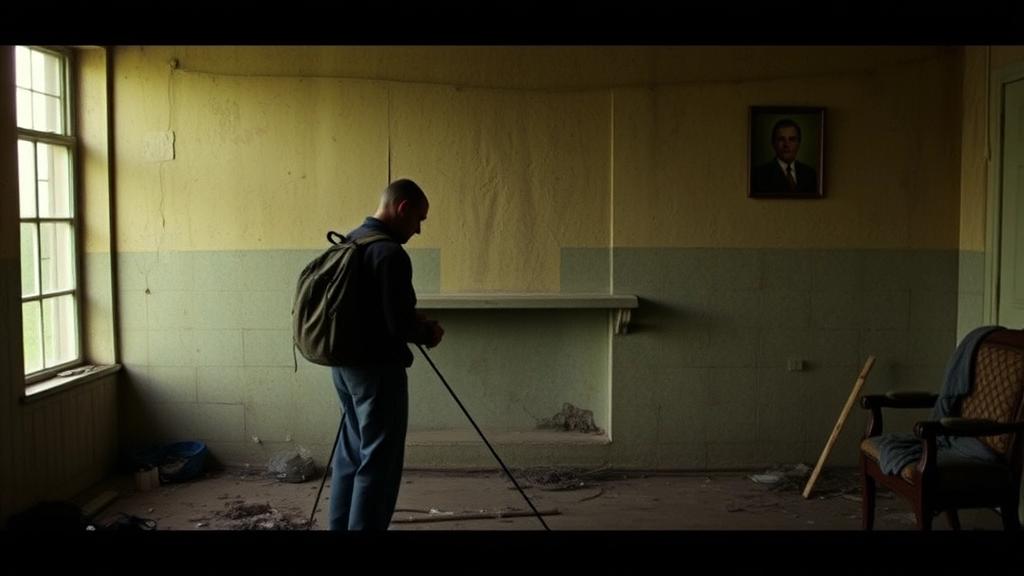
Ever wondered how to capture the eerie beauty of abandoned summer camps in Georgia?
You’re not alone.
Many of us are itching to document these forgotten places, but where do you even start?
Let’s break it down.
Why Document Abandoned Camps?
First off, why should you even bother?
- Preserving History: These camps have stories to tell.
- Unique Content: Your photos and videos will stand out.
- Adventure: It’s a thrill to explore and capture the unknown.
Gear Up: What You Need
You don’t need fancy equipment to start.
Here’s a quick list:
- Camera: A DSLR or even a good smartphone will do.
- Tripod: For those stable shots.
- Drone: To get aerial views.
- Backup Batteries: You don’t want to run out of juice.
- Flashlight: Some spots are dark, even during the day.
Tips for Killer Shots
Ready to shoot?
Keep these in mind:
- Golden Hour: Early morning or late afternoon light is magical.
- Angles: Get creative. Shoot from high, low, and odd angles.
- Details: Focus on the little things—rusty swings, broken windows, old signs.
- People: If you’re with friends, include them for scale and interest.
Videography: Bringing It to Life
Photos are great, but videos can capture the vibe.
- B-roll: Get plenty of extra footage—trees swaying, old cabins, etc.
- Narration: Tell a story. Explain what you’re seeing.
- Editing: Keep it simple. Use basic cuts and transitions.
Safety First
Don’t forget:
- Wear sturdy shoes.
- Bring a first-aid kit.
- Tell someone where you’re going.
- Watch out for unstable structures.
Sharing Your Work
Once you’ve got your shots, share them!
- Social Media: Instagram, TikTok, YouTube.
- Blog: Write about your experience.
- Local Groups: Share in urban exploration communities.
Real Talk: The Challenges
It’s not all smooth sailing.
- Weather: Rain can ruin your plans.
- Access: Some places are hard to get to.
- Legal Issues: Make sure you’re not trespassing.
But trust me, the rewards outweigh the risks.
You’ll walk away with some epic shots and stories to tell.
Abandoned Summer Camps in Popular Culture
Ever wondered why abandoned summer camps in Georgia keep popping up in movies and TV shows? Let’s dive into it.
Why Are Abandoned Summer Camps So Fascinating?
First off, why do these deserted places capture our imagination so much? Here’s the deal:
- Nostalgia: They remind us of simpler times—think marshmallow roasts and ghost stories.
- Mystery: The ‘what happened here?’ factor is irresistible.
- Atmosphere: The eerie vibe makes them perfect settings for thrillers and horror flicks.
Examples in Movies and TV Shows
Let’s talk specifics. These camps are a goldmine for filmmakers:
- Friday the 13th: The iconic horror film series is practically synonymous with abandoned summer camps.
- American Horror Story: 1984: This season taps into the spooky camp vibe to deliver chills.
- The Parent Trap: Okay, not abandoned, but it shows the allure of camp settings in storytelling.
Why Georgia?
Georgia’s got the perfect mix—dense forests, old structures, and that Southern charm. It’s no wonder directors flock here.
The Role of Abandoned Camps in Storytelling
These locations aren’t just backdrops; they’re characters in their own right. They add:
- Tension: The isolation ramps up the stakes.
- History: Every creaky floorboard tells a story.
- Visual Appeal: The rustic, decaying look is cinematic gold.
Real Stories, Real Impact
I’ve heard tales from locals who swear these camps are haunted. Whether you believe in ghosts or not, these stories add layers of intrigue.
How to Capture the Magic
Want to document these spots yourself? Here’s what you need:
- Gear: A good camera, drone, and maybe a flashlight.
- Timing: Golden hour is your friend.
- Safety: Don’t go alone, and always tell someone where you’re headed.
The Future of Abandoned Camps in Pop Culture
These camps aren’t going anywhere. If anything, their role in pop culture is only growing. With the rise of urban exploration and the never-ending appetite for spooky stories, abandoned summer camps are here to stay.
Stories and Myths Surrounding Abandoned Camps
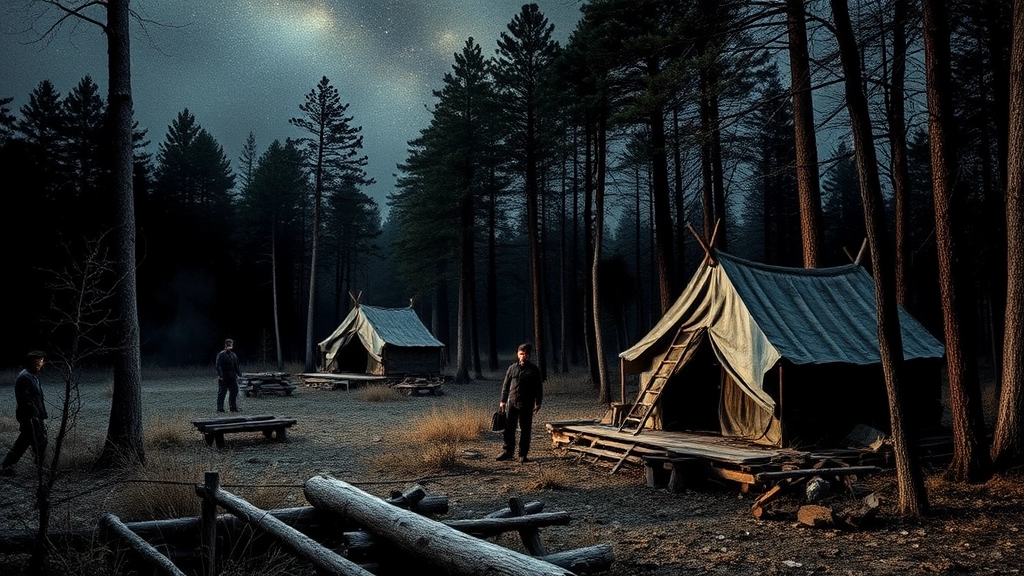
Ever wondered what really happens at those abandoned summer camps in Georgia?
Yeah, me too.
There’s something about these forgotten places that sparks curiosity and maybe a bit of fear.
Why Are We So Drawn to These Places?
Is it the thrill of the unknown?
Or maybe it’s the stories and myths that keep us coming back for more.
Let’s dive in.
The Haunting Tales
You’ve probably heard the whispers.
- Ghosts of campers who never left.
- Mysterious noises echoing through the trees.
These tales are like campfire stories on steroids.
Why Do We Believe?
- Human Nature: We love a good story. Especially when it’s spooky.
- The Unknown: What we don’t understand, we often fear.
- Shared Experiences: Hearing others’ encounters makes it feel real.
A Few Legends to Keep You Awake
- The Lost Camper: A tale of a child who wandered off and never returned. Some say they still see his ghost at night.
- The Phantom Counselor: A mysterious figure who appears in the shadows, guiding lost souls.
- The Cursed Cabin: Enter if you dare. Many have tried, few have returned with their wits intact.
Why Do These Myths Persist?
- History: These camps have been around for ages. Plenty of time for stories to brew.
- Isolation: Being out in the woods alone? Yeah, your mind can play tricks.
- Community: Sharing these tales keeps them alive.
What’s the Real Story?
Most of the time, it’s just rumours.
But sometimes, there’s a nugget of truth.
That’s what makes it exciting, right?
Exploring These Camps
If you’re thinking about checking out these sites, here’s what I’d recommend:
- Buddy System: Never go alone. Seriously.
- Stay Safe: These places can be dangerous. Watch your step.
- Respect the Space: Remember, these camps have history.
Opportunities for Restoration and Repurposing
Ever wondered what could be done with those old, abandoned summer camps in Georgia? It’s a question that crosses the minds of many who stumble upon these forgotten sites. Let’s dive into the possibilities and see how these relics of the past can be brought back to life.
Why Restore Abandoned Camps?
First off, why even bother with restoring these old camps? Well, there are several compelling reasons:
- Historical Preservation: These camps are a slice of history. Restoring them keeps that history alive for future generations.
- Community Benefits: Repurposing these sites can provide new recreational areas, community centres, or even educational facilities.
- Economic Boost: A restored camp can become a tourist attraction, bringing in revenue and creating jobs.
What Can They Be Turned Into?
The options are endless, but here are some practical ideas:
- Outdoor Adventure Parks: Think zip lines, obstacle courses, and hiking trails.
- Retreat Centres: Perfect for corporate team-building events or wellness retreats.
- Educational Camps: Focus on environmental education, offering hands-on learning experiences.
- Event Venues: Weddings, festivals, and other large gatherings could find a unique home here.
Steps to Restoration
If you’re thinking about diving into a restoration project, here’s a step-by-step guide to get you started:
- Assess the Site: Check the structural integrity of buildings and the condition of the land.
- Secure Funding: Look into grants, crowdfunding, or private investments.
- Get Legal Clearance: Ensure you have the necessary permits and that the land is zoned for your intended use.
- Plan the Restoration: Create a detailed plan outlining what needs to be done, from repairing buildings to landscaping.
- Execute the Plan: Hire contractors, gather volunteers, and get to work.
Real-Life Example
Take the case of Camp Blue Ridge, an old summer camp that was transformed into a thriving retreat centre. The owners saw potential in the abandoned cabins and overgrown trails. With a bit of vision and a lot of hard work, they turned it into a popular destination for weekend getaways and corporate retreats.
Challenges to Consider
Of course, it’s not all sunshine and rainbows. Restoring an abandoned camp comes with its own set of challenges:
- High Costs: Restoration can be expensive, especially if the site is in poor condition.
- Regulatory Hurdles: Navigating local regulations and obtaining the necessary permits can be time-consuming.
- Environmental Concerns: You may need to address issues like soil contamination or endangered wildlife.
Legal Considerations When Visiting Abandoned Camps
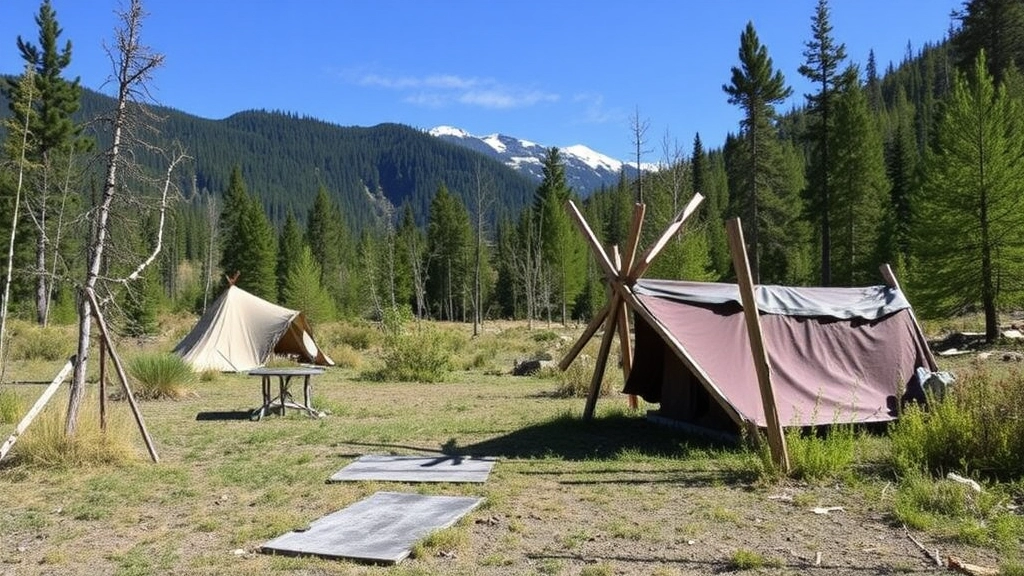
So, you’re itching to explore some abandoned summer camps in Georgia?
Trust me, I get it. The thrill of uncovering forgotten places is a rush like no other.
But before you dive in, let’s talk legal stuff.
Yeah, I know, it’s not the most exciting topic, but it’s crucial.
Why Should You Care About Legalities?
First off, you don’t want to get slapped with a hefty fine or, worse, end up in jail.
Trespassing is a real issue, and abandoned camps are often on private property.
So, here’s what you need to know:
Get Permission
- Ask the Property Owner: If you can track them down, get their permission. It’s a simple ask that can save you a lot of trouble.
- Check Local Laws: Some areas have specific regulations about trespassing and exploring abandoned sites.
Safety First
- Liability Issues: If you get hurt, you’re on your own. Property owners aren’t liable for injuries on their abandoned sites.
- Insurance: Make sure your personal insurance covers you for these kinds of adventures.
Respect the Site
- No Vandalism: Leave no trace. It’s not just about legality; it’s about respect.
- Don’t Steal: Taking anything from the site can land you in hot water.
Real-Life Example
A mate of mine once explored an abandoned camp without permission.
Guess what? He got caught and had to pay a fine.
Not fun.
Legal Resources
- Local Government Websites: They often have info on property laws.
- Urban Exploration Forums: Great for tips and sometimes even legal advice.
How to Plan an Urban Exploration Adventure
Ever wondered how to plan an urban exploration adventure? It can be daunting, right? You’re not alone. Many of us have that itch to explore abandoned places, but the fear of the unknown and safety concerns often hold us back. Let’s break it down together.
Why Plan an Urban Exploration Adventure?
First off, why even bother planning an urban exploration adventure? Simple. It’s about discovering hidden gems and unearthing forgotten stories. Plus, the thrill of walking through history is unbeatable. But remember, preparation is key to making it a safe and enjoyable experience.
Step-by-Step Guide to Planning Your Adventure
- Research the Location: Know where you’re going. Use Google Maps, read blogs, and check forums. Look for abandoned summer camps in Georgia if that’s your target. This will give you a lay of the land and some background info.
- Check Legalities: Some places are off-limits. Trespassing can get you into serious trouble. Always check if you need permission to enter. This is crucial for legal considerations when visiting abandoned camps.
- Safety First: Urban exploration isn’t without risks. Wear sturdy shoes, bring a flashlight, and never go alone. Here are some essentials:
- First Aid Kit
- Water and Snacks
- Protective Gear (gloves, mask)
- Gear Up: A good camera or smartphone is a must for documenting your journey. You might want to delve into documenting the forgotten: photography and videography.
- Plan Your Route: Don’t just wing it. Have a clear route and stick to it. Share your plan with someone who isn’t going with you, just in case.
Stories from the Field
Let me share a quick story. A mate of mine once explored an abandoned camp in Georgia. He planned meticulously but forgot to check the weather. Long story short, he ended up spending the night in his car because of an unexpected storm. Lesson learned: always check the weather forecast.
Common Questions and Concerns
- Is it safe? If you follow safety precautions, it can be. But always be prepared for the unexpected.
- What if I get caught? That’s why checking legalities is crucial. If you have permission, you’re golden.
- What should I pack? Think essentials – first aid, water, snacks, flashlight, and a charged phone.
Notable Abandoned Campsites Worth Exploring
Thinking about diving into the eerie world of abandoned summer camps in Georgia?
You’re not alone.
Loads of folks are curious about these forgotten places.
But where should you start?
Let’s break down some of the most notable abandoned campsites worth exploring.
Camp Blue Ridge
First up, Camp Blue Ridge.
This place is a treasure trove for urban explorers.
Nestled in the North Georgia mountains, it’s got everything from decaying cabins to overgrown paths.
Why Visit?
- Historical Vibes: Opened in the 1960s, it’s got that old-school camp feel.
- Nature’s Takeover: Trees and vines have reclaimed much of the area, making it a hauntingly beautiful spot.
Camp Rutledge
Next on the list is Camp Rutledge.
Located in Hard Labor Creek State Park, this camp has a rich history and even richer ghost stories.
Highlights
- Spooky Stories: Rumoured to be haunted, perfect for those who love a good scare.
- Film Fame: Featured in movies like “Friday the 13th Part VI: Jason Lives”.
Camp Lawton
Ever heard of Camp Lawton?
This site served as a Civil War prison camp before becoming a summer camp.
What’s Cool About It?
- Dual History: Civil War artefacts and summer camp relics.
- Educational: Great for history buffs.
Camp Pine Acres
Camp Pine Acres is another gem.
Located near Lake Allatoona, it’s a bit off the beaten path but worth the trek.
Why It Stands Out
- Scenic Views: Overlooks the lake, offering stunning photo ops.
- Quiet and Secluded: Perfect for those who want a peaceful exploration.
Tips for Your Adventure
Before you head out, keep these tips in mind:
- Safety First: Always go with a buddy and carry a first-aid kit.
- Legal Stuff: Make sure you’re not trespassing. Check local laws.
- Gear Up: Bring a good camera, flashlight, and sturdy shoes.
Frequently Asked Questions About Abandoned Summer Camps in Georgia
What are the main reasons why summer camps in Georgia were abandoned?
There are several reasons why summer camps in Georgia were abandoned:
- Economic Downturns: Financial struggles led to many camps shutting down.
- Changing Interests: Kids today prefer technology over outdoor activities.
- Natural Disasters: Floods and storms have made some camps unusable.
Why were summer camps so popular in the past?
Summer camps were once the go-to for kids. They offered fresh air and adventure, and parents appreciated the break from the daily grind.
What cultural shifts have impacted the popularity of summer camps?
Cultural shifts that have impacted the popularity of summer camps include:
- Rise of Technology: Kids are more interested in video games and social media.
- Safety Concerns: Parents are more worried about sending their kids away.
- Alternative Activities: Sports leagues, music lessons, and other activities have become more popular.
Are there any historical efforts to preserve these abandoned camps?
Yes, there are several preservation efforts:
- Historical Societies: Some are pushing to preserve these sites.
- Local Communities: They see the potential for tourism.
- Documentaries: Filmmakers are capturing the stories behind these camps.
What kind of equipment do I need to document abandoned camps?
You don’t need fancy equipment to start documenting abandoned camps. Here’s a quick list:
- Camera: A DSLR or even a good smartphone will do.
- Tripod: For stable shots.
- Drone: To get aerial views.
- Backup Batteries: To ensure you don’t run out of power.
- Flashlight: Some spots are dark, even during the day.
What are some tips for taking great photos of abandoned camps?
Here are some tips for taking great photos:
- Golden Hour: Early morning or late afternoon light is magical.
- Angles: Get creative. Shoot from high, low, and unusual angles.
- Details: Focus on the little things—rusty swings, broken windows, old signs.
- People: Include friends for scale and interest.
What are some common myths and stories about abandoned camps?
Some common myths and stories include:
- The Lost Camper: A tale of a child who wandered off and never returned.
- The Phantom Counselor: A mysterious figure who appears in the shadows.
- The Cursed Cabin: A cabin that many have entered but few have left with their wits intact.
Why do these myths persist?
These myths persist due to:
- History: These camps have been around for ages, providing plenty of time for stories to brew.
- Isolation: Being alone in the woods can make your mind play tricks.
- Community: Sharing these tales keeps them alive.
What legal considerations should I keep in mind when visiting abandoned camps?
It’s important to consider the following legal aspects:
- Get Permission: Always ask the property owner for permission if you can track them down. Check local laws regarding trespassing.
- Safety: Property owners aren’t liable for injuries on their abandoned sites. Make sure your personal insurance covers you for these kinds of adventures.
- Respect the Site: Leave no trace and don’t take anything from the site.
Where can I find more information about the legal aspects of exploring abandoned camps?
You can find more information on:
- Local Government Websites: They often have information on property laws.
- Urban Exploration Forums: These are great for tips and sometimes even legal advice.
References
- Exploring the Eerie Beauty of Abandoned Summer Camps
- The Haunting Photos of Abandoned Summer Camps
- 10 Abandoned Summer Camps and the Stories Behind Them

